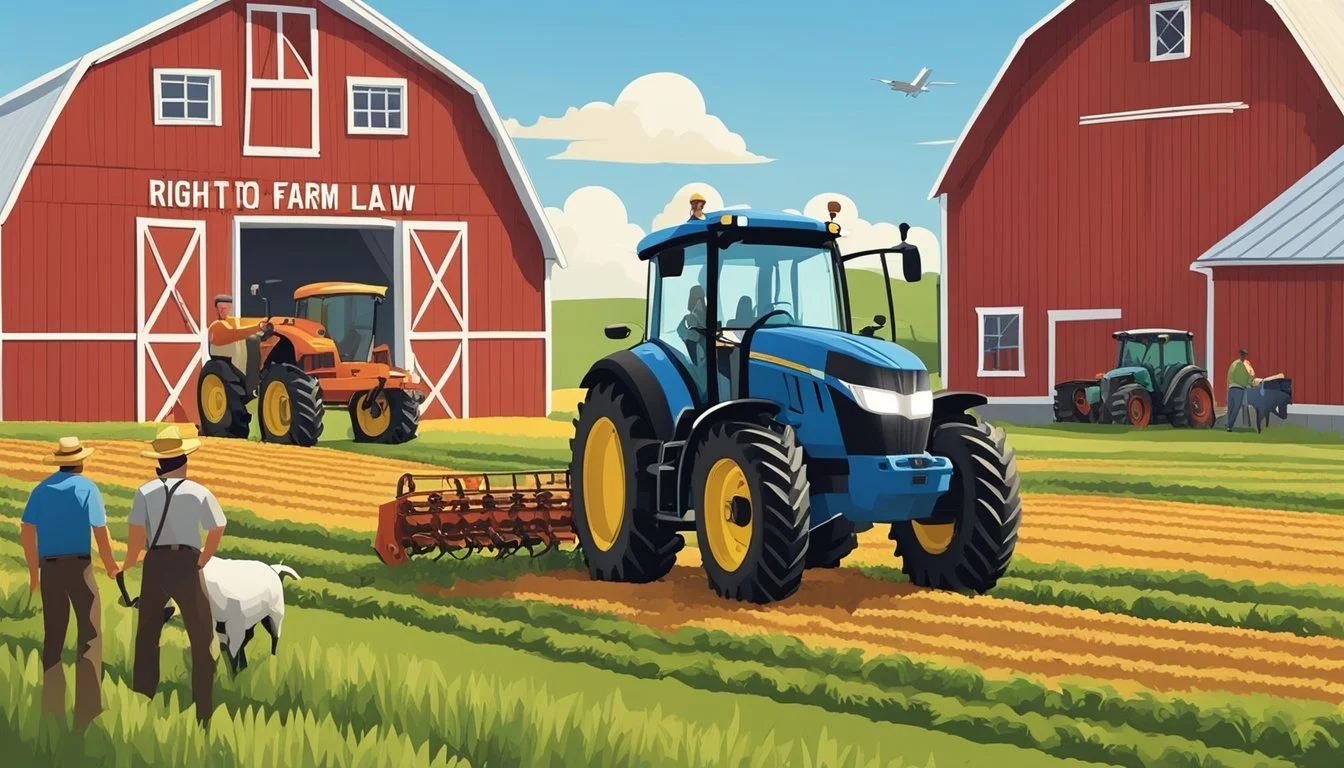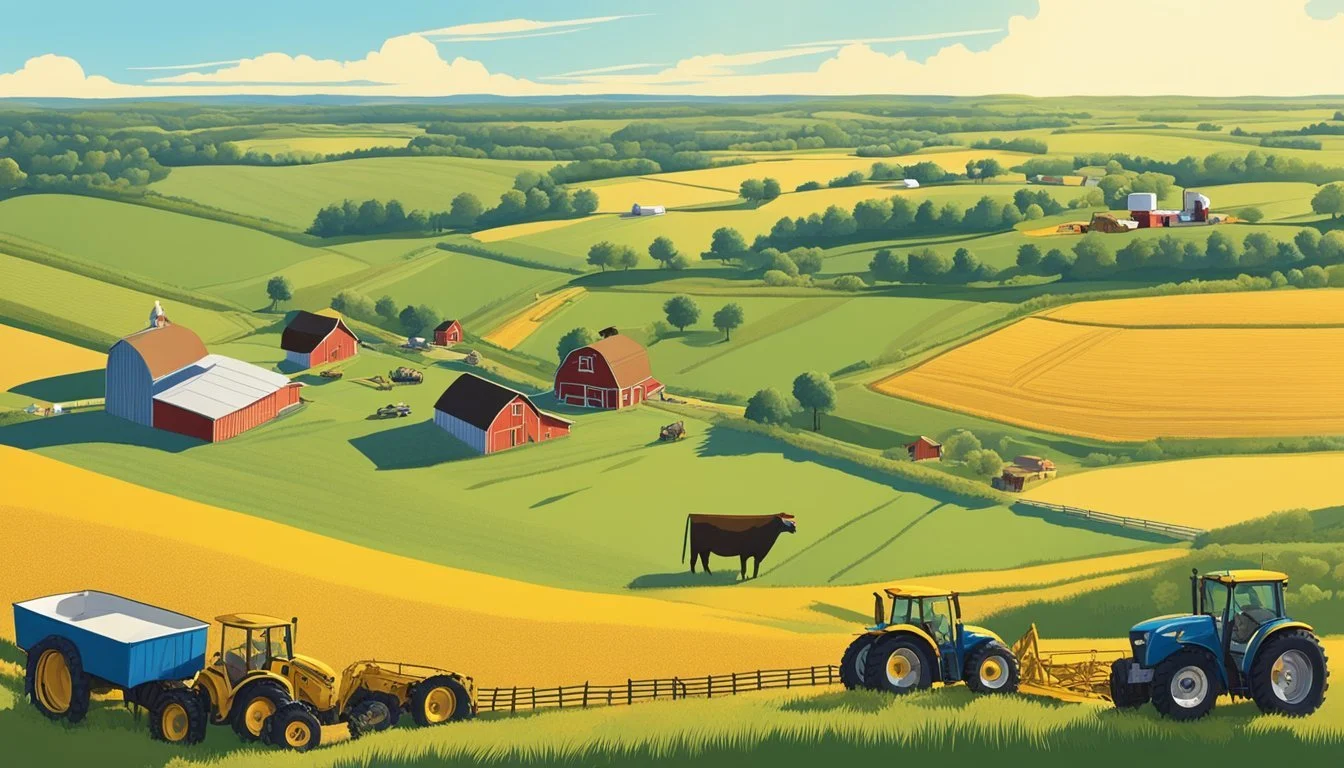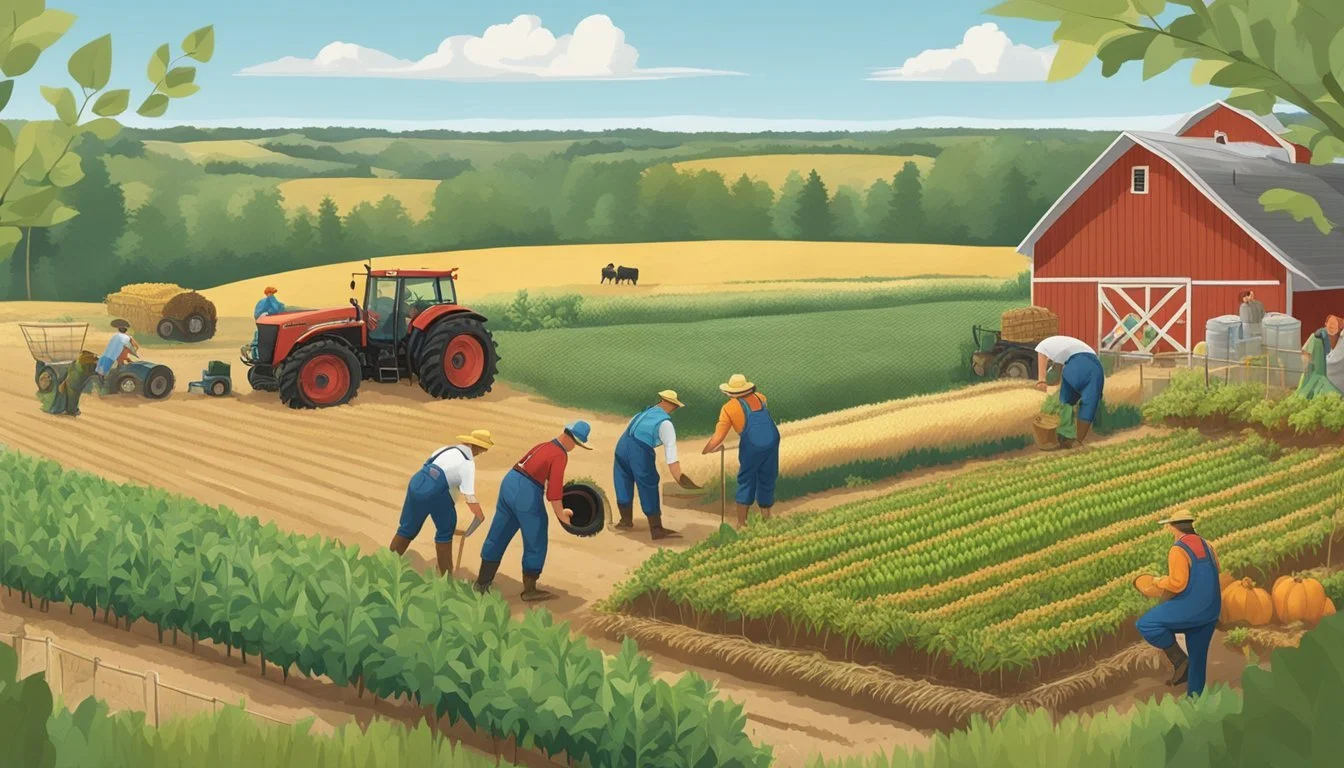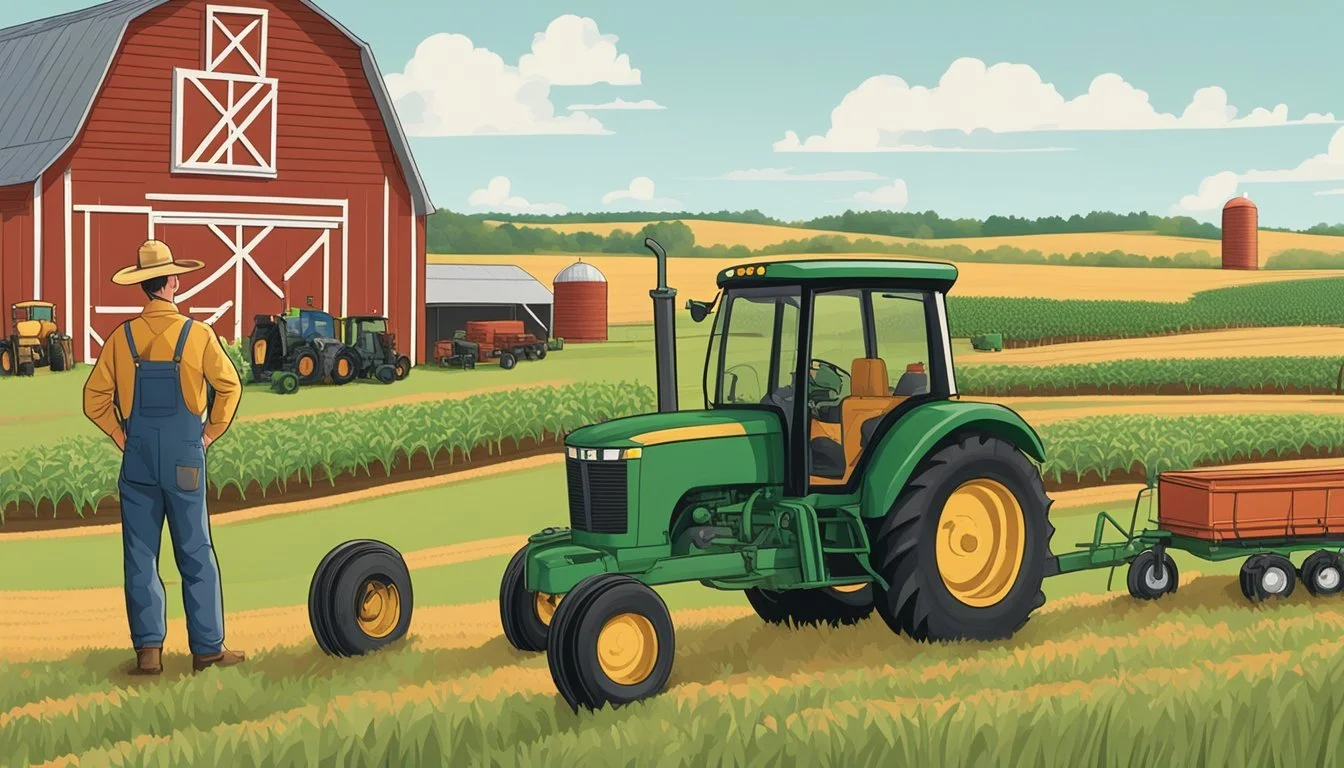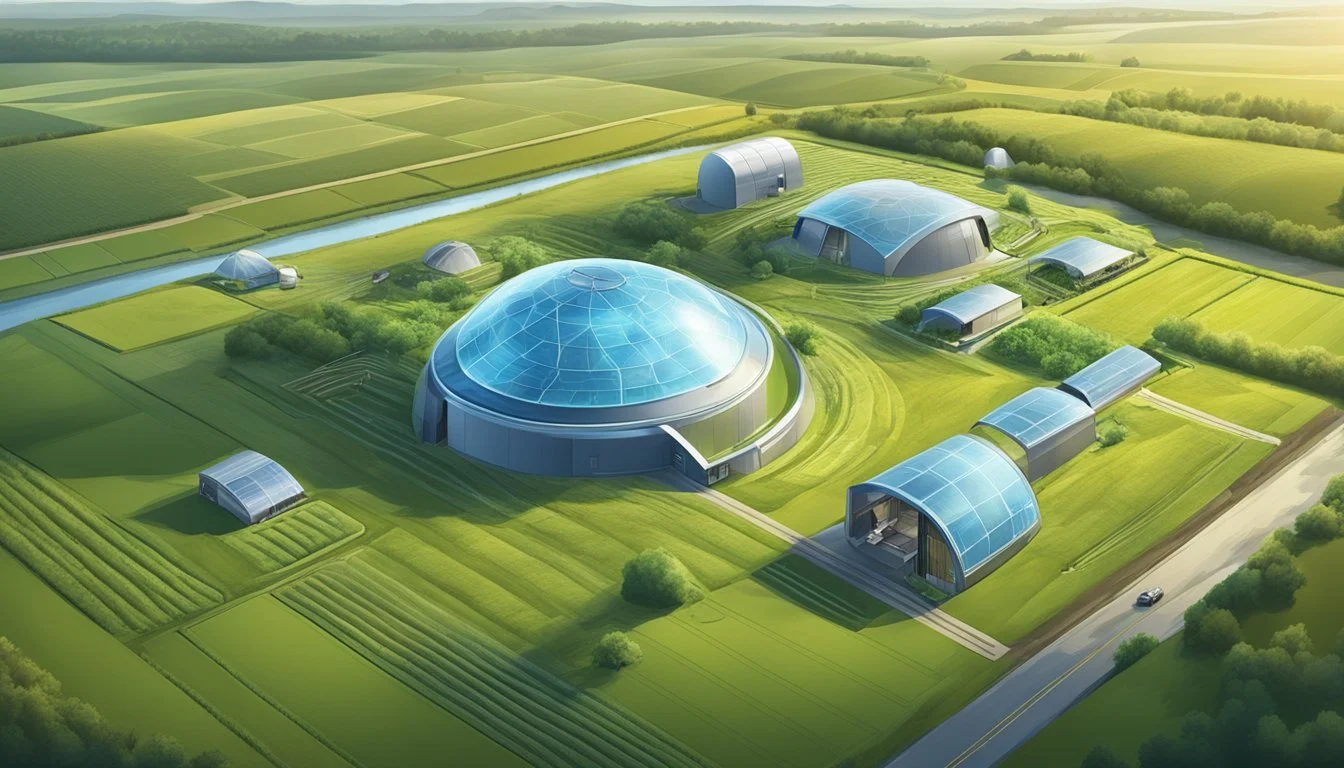Right to Farm Law in Minnesota
Understanding Your Agricultural Rights
Minnesota's agricultural landscape is underpinned by the Right-to-Farm Law, a legislative framework designed to protect the interests of farmers and the agricultural industry. Established initially in 1982, this law seeks to shield qualifying agricultural operations from nuisance lawsuits, particularly those initiated by new residents to a rural community who may find fault with the incidental noise, odors, and other byproducts of standard farming activities.
The intention behind the Right-to-Farm Law in Minnesota is not only to preserve the farming way of life but also to affirm the importance of agriculture to the state’s economy and heritage. By establishing certain protections, the state acknowledges the significance of having a robust agricultural sector and thus attempts to mitigate conflicts that arise when non-agricultural land uses encroach on farmland. The law thereby attempts to strike a balance, allowing farmers to undertake their operations without the threat of litigation that might arise from the normal inconveniences of agricultural production.
Although the number of farms in Minnesota has decreased, the Right-to-Farm Law continues to play a crucial role in the state by offering a degree of certainty for farmers. With farming being a cornerstone of Minnesota's economic and cultural identity, the law serves as a testament to the state's commitment to safeguarding its agricultural operations and ensuring that farming remains a viable and valued activity.
Historical Context of Right-to-Farm Laws
Right-to-Farm laws originated as a response to the conflicts between agricultural and non-agricultural land uses. They evolved to protect farmers from nuisance lawsuits in the face of expanding suburban development.
Early Legislation
Right-to-Farm (RTF) laws were first implemented in the United States during the 1970s. The inception of these laws coincided with increased suburban expansion into traditionally rural areas. Residents new to rural lifestyles often brought complaints against longstanding agricultural operations, leading to an uptick in nuisance lawsuits. These complaints typically focused on issues such as odor, noise, and other inconveniences related to farming practices. To address this, states began enacting RTF laws to shield farmers from such legal challenges, essentially acknowledging the importance of agricultural practices and the need to preserve farm operations.
Evolution in Minnesota and Nationwide
Since Minnesota passed its RTF legislation in 1982, the law has seen several revisions and additions reflecting the changing landscape of agriculture and suburban life. The law helped to protect farmland from encroachment by non-farming developments and set a clear legal precedent that established agriculture as a protected practice under Minnesota Statutes.
Nationwide, all fifty states have now put similar RTF statutes on the books. Varying from state to state, these laws generally aim to protect qualifying farmers from nuisance lawsuits. The Minnesota statute, notably, provides definitions and sets parameters for what constitutes an "agricultural operation," a term which encapsulates facilities producing crops and livestock, but not primarily processing agricultural products. Over time, RTF laws across the different states have supported agriculture by acknowledging its critical role and offering reassurance to farmers that their right to farm will be recognized and upheld.
Purpose and Scope of Minnesota's Right-to-Farm Law
Minnesota's Right-to-Farm (RTF) Law serves to promote the agricultural industry by protecting lawful farming operations from nuisance lawsuits and ensuring the rights of farmers to conduct standard farming practices without undue interference.
Protecting Farming Operations
The RTF Law in Minnesota is designed to shield farmers and their operations from nuisance claims, provided they adhere to standard methods and practices. It acknowledges farming as an essential service and aims to prevent the establishment of new residential developments from threatening existing operations. Local governments have the authority to implement regulations via zoning ordinances but must do so without conflicting with RTF statutes.
Defining Agricultural Land and Operations
Under Minnesota statutes:
Agricultural operation refers to the production facilities and appurtenances for crops, livestock, poultry, or dairy, excluding primary processing plants.
Agricultural land encompasses the area utilized for the production of these agricultural commodities. Any state action with the potential to negatively impact ten acres or more of such land must undergo review by the Minnesota Department of Agriculture, unless already covered by state environmental review processes.
Key Provisions of the Law
The Right to Farm Law in Minnesota is designed to protect agricultural operations from nuisance lawsuits, striking a balance between the interests of farmers and their neighbors.
Nuisance Protection for Farmers
Minnesota Statute 561.19 offers nuisance liability protection for agricultural operations by limiting the circumstances under which they can be deemed a nuisance. Such protections are critical for operations that are agricultural in nature, including but not limited to the production of crops, livestock, poultry, dairy, or poultry products. The law acknowledges the normal inconveniences associated with farming and provides legal safeguards for established farms, particularly family farms, against complaints that might arise from newcomers to rural areas.
Restrictions and Limitations
Although the law provides broad protections, there are restrictions and limitations to consider:
The protection does not extend to operations primarily engaged in processing agricultural products.
The agricultural operation must be established prior to the surrounding non-agricultural activities.
The operation must comply with applicable state and federal laws and regulations.
It is important for farm operators to be familiar with the specifics of these provisions to ensure their practices are in line with the legal expectations and protections afforded by the Right to Farm Law.
Legal Challenges and Public Policy
The Right to Farm Law in Minnesota is steeped in legal complexities and public policy debates. Challenges mostly arise from the interpretation of statutes and the balancing act between agricultural practices and environmental concerns.
Notable Court Cases
In Minnesota, legal battles have centered on issues such as nuisance claims and the environmental impacts of farming operations. There have been cases where corporate farms faced lawsuits for violating emission standards. Courts often have to interpret Minnesota’s Right-to-Farm Statutes, particularly Minn. Stat. § 561.19, where definitions and the scope of what constitutes an agricultural operation are critical.
Influence on Local and National Policy
The interplay between state laws and local government regulations is a key aspect of public policy in Minnesota. Local governments have the authority to enact zoning ordinances, for instance, setback requirements for farms to mitigate nuisance issues. However, these local ordinances must align with the Right-to-Farm (RTF) law and other state provisions. At the national level, Minnesota's agricultural policies contribute to discussions on sustainable farming practices and fair market access for farmers, influencing broader legislative efforts.
Impact on Minnesota Agriculture
The Right-to-Farm Law has shaped the landscape of Minnesota's agriculture, manifesting in both its economy and environment, while evidently influencing the state's agricultural practices.
Economic Effects
The enactment of Minnesota's Right-to-Farm (RTF) legislation in 1982 was ostensibly designed to protect farmland and foster agricultural economic interests. Since the legislation's introduction, however, Minnesota has seen a 28 percent decrease in the number of farmers and a reduction of farmland by 8 percent. This law's intention to safeguard farmers against urban encroachment has been met with mixed economic outcomes. Proponents argue it offers essential support for farmers allowing them to maintain their livelihoods unimpeded by non-agricultural development. Critics, however, point to the decline in farming numbers as indicative of economic pressures that the law has not fully alleviated.
Environmental Concerns
The legislation also intersects with environmental factors affecting Minnesota's agriculture. The balance of promoting agricultural practices while preventing environmental degradation is a nuanced aspect of the RTF law. Projects negatively impacting more than ten acres of agricultural land come under the scrutiny of the Minnesota Department of Agriculture. This indicates a recognition of the potential for agricultural practices to contribute to environmental concerns, such as pollution and habitat disruption. Sustainable agricultural practices are encouraged, reflecting an understanding of the long-term connection between a healthy environment and a robust agricultural economy.
Compliance and Enforcement
In Minnesota, compliance with Right to Farm laws is crucial to ensure the balance between agricultural practices and the rights of neighboring properties. Enforcement measures are taken seriously to maintain this equilibrium.
Regulatory Bodies
Minnesota Department of Agriculture (MDA) serves as the primary regulatory body, overseeing compliance with agricultural regulations. When state or state-funded projects potentially affect larger tracts of farmland, they are reviewed under the scrutiny of the MDA. This ensures that any development does not adversely impact agricultural operations on a significant scale.
Inspection and Violation Handling
Inspections are carried out to enforce compliance. When a potential violation is identified, it is handled according to established protocols. Enforcement actions can include:
Issuing warnings that detail the nature of the violation
Imposing penalties as stipulated by the state law
Recommending corrective measures to mitigate the effects of non-compliance
Local governments also have the authority to create ordinances such as zoning requirements, which must align with state Right to Farm laws. The Minnesota Pollution Control Agency may be involved when agricultural operations are suspected of violating emission standards or other environmental regulations.
Interactions with Other Laws
The Right to Farm Law in Minnesota is affected by various other legal frameworks, including zoning regulations and environmental protections. The way these laws interact can significantly impact agricultural operations and their ability to function effectively within the legal landscapes.
Zoning Regulations
Zoning ordinances at the local level often intersect with Right to Farm laws. Minnesota's Right to Farm laws provide a safeguard for agricultural operations by limiting the extent to which local zoning can interfere with farming activities. However, farmers must navigate a complex tapestry of local ordinances that may impose restrictions on operational aspects such as building sizes, lot coverage, and farm practices. The specific limitations set forth by local zoning can vary widely, with agricultural zones typically being more permissive towards farming activities.
Environmental Protections
Environmental laws in Minnesota serve to protect natural resources, which sometimes requires regulation of farming activities to prevent negative environmental impacts. Right to Farm laws do not absolve farmers from compliance with environmental statutes. Farmers must adhere to environmental protections related to water quality, soil conservation, and air emissions. These laws might include provisions requiring buffer zones around water bodies, management plans for handling manure, and restrictions on pesticide usage. There is a necessary balance between preserving the rights of farmers to operate and maintaining the integrity of the state's ecological systems.
Resources for Farmers and Landowners
Farmers and landowners in Minnesota have access to a variety of resources aimed at preserving agricultural land and supporting their operations. These resources offer both legal protection and financial aid, ensuring the sustainability and profitability of agricultural activities.
Support Programs and Services
Minnesota Agricultural Land Preservation Program
Implemented for counties outside the Twin Cities metro area, this program engages counties like Winona, Waseca, and Wright. Landowners interested in this program should contact the planning and zoning office in their county for enrollment details. The program's objective is to safeguard farmland from non-agricultural development pressures, ultimately supporting the family farm trust.
Right-to-Farm Laws
Since 1982, the protection of agricultural operations has been a legislative priority in Minnesota. The Right-to-Farm laws aim to defend farm owners and operators from nuisance lawsuits, fostering an environment where farming activities can proceed without undue interference. Farm families can enquire about their rights under this legislation to reinforce the resilience of their operations.
Legal and Financial Assistance
Minnesota Right to Farm Enabling Statute (Minn. Stat. § 561.19)
This statutory provision clarifies the definition and scope of agricultural operations within the state, imparting legal clarity for farm owners. It's crucial for landowners and farmers to be familiar with its definitions and protections, as it underpins the legal framework supporting their livelihoods.
'Buy the Farm' Law
Unique to Minnesota, this law provides landowners facing utility development, such as high-voltage power lines, a choice to require utility companies to purchase their entire farm. It is an extraordinary illustration of the state's commitment to upholding property rights and offering financial recourse to affected landowners.
Future of Farming and Right-to-Farm
Farming in Minnesota is poised to evolve with advancements in technology and shifts in legislative frameworks that influence Right-to-Farm laws.
Technological Innovations
The agricultural sector in Minnesota is experiencing significant changes through the introduction of new technologies that enhance production and sustainability. Precision agriculture has become a cornerstone of future trends in farming, utilizing GPS mapping and data analytics to optimize the use of resources. Drones, for instance, are now commonly used for crop monitoring, providing farmers with detailed insights into plant health and soil conditions. These innovations not only increase the efficiency of farming practices but also reduce the environmental footprint of agriculture.
Key Technologies:
GPS-equipped machinery for precise planting and fertilization
Drones for crop surveillance and health assessment
Automated irrigation systems that adjust to weather forecasts and soil moisture levels
Robotics for harvesting and handling crops
Adopting these technologies helps protect farmers under the Right-to-Farm laws by demonstrating modern, responsible farming practices that are less likely to cause disputes with nearby non-farming communities.
Legislative Trends
Legislation often reflects and adapts to the changing landscape of agriculture. The evolution of Right-to-Farm (RTF) laws is crucial in safeguarding the interests of farmers as they integrate new technologies into traditional farming practices. Minnesota's RTF law, established in 1982, is designed to defend farmers against nuisance lawsuits that may arise from normal farming operations. Since then, legislative trends have shown an interest in updating RTF laws to keep pace with both the expansion of urban areas into rural regions and the diversification of agricultural activities.
Recent Legislative Adjustments:
Clarification of which farming practices are protected
Amendments to ensure RTF laws account for modern, sustainable practices
Engagement with local stakeholders to balance farm operations with community interests
Farmers in Minnesota must keep abreast of legislative changes to continue benefitting from RTF protections. As these laws evolve, they will play a pivotal role in shaping the future of agricultural practices and the stability of rural economies.




